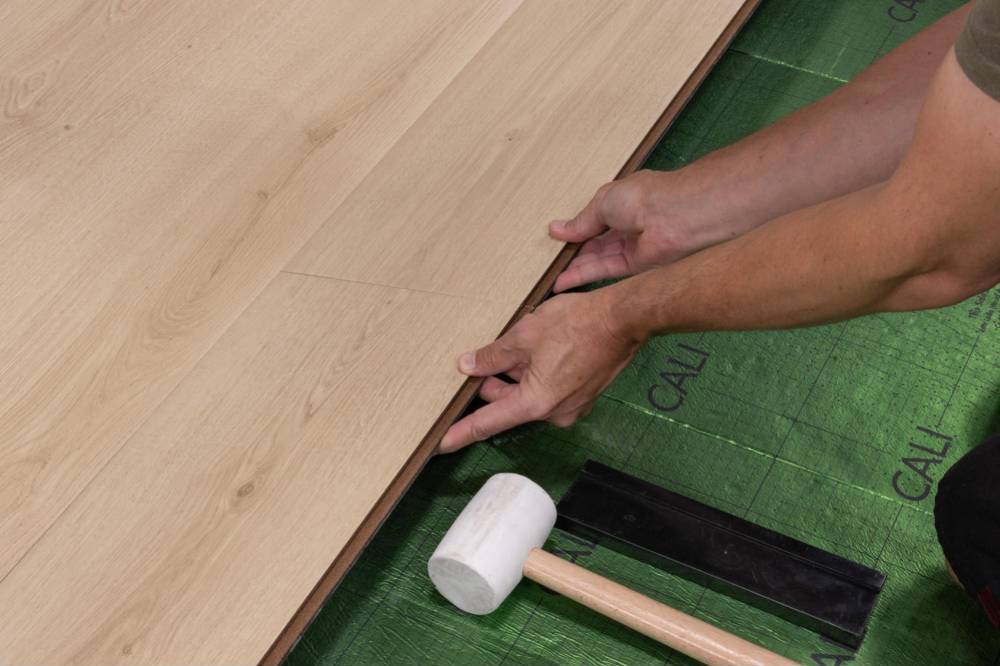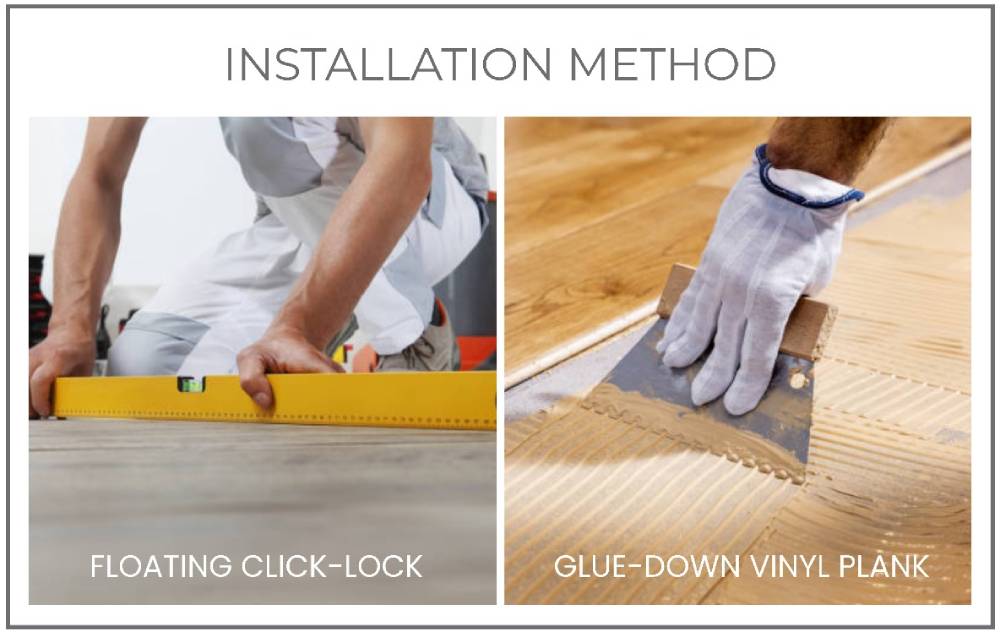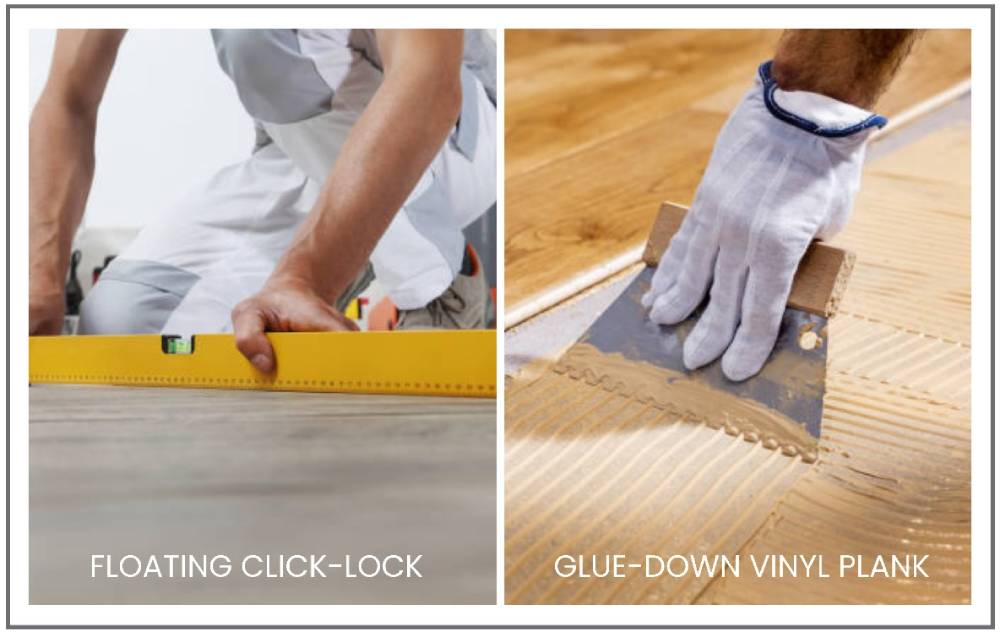
BE THE FIRST TO KNOW
Subscribe to the Porto eCommerce newsletter to receive timely updates from your favorite products.
Want new floors without paying for an installer? You can do it yourself.
Installing luxury vinyl plank flooring is one of the easiest DIY projects out there. No special tools. No pro skills. Just a smooth surface, some basic gear, and a little time.

In this guide, you’ll learn how to:
This is a full, no-stress walkthrough made for real people. If you’re ready to take on a rewarding DIY project, let’s get started.

Yes, you can install luxury vinyl plank flooring on your own.
This flooring is made for DIY projects. The planks are easy to work with and snap or glue into place. You do not need special tools or any training to get started.
It works well in most rooms. You can use it in bedrooms, living rooms, hallways, or even bathrooms. If you follow the steps and stay patient, you can get a clean, finished floor that looks like it was done by a pro.
You just need a flat surface, some tools, and a good plan. We will walk you through the process so you can get the job done right.
You can do this.
Before you start, gather the tools you need. Having everything ready will save you time and help the install go smoother.

Pro tip: Read the instructions that come with your vinyl planks. Some have built-in underlayment. Others may need a separate layer depending on your subfloor.
Once your tools are ready, you're one step closer to installing luxury vinyl plank flooring the right way.

Before installing, make sure your subfloor is clean, flat, and ready. This step sets the foundation for a smooth install and a long-lasting floor.
Here’s what to do:
✅ Quick tip: A well-prepped subfloor helps avoid problems like lifted edges, gaps, or uneven rows later on.
Now that your surface is ready, it’s time to plan your layout and start placing planks.
Getting the first row right is a big deal. If you start off crooked, the whole floor can end up out of line. Take a few minutes to plan your layout before you begin.
Here’s what to do:
Pro tip: If you’re unsure where to start, lay your first row along the wall that gets the most light. It helps hide small gaps or seams.
Once that first line is set, you're ready to begin installing LVP flooring the right way.
Now that your starting line is set, it’s time to lay some planks.


There’s more than one way to install luxury vinyl plank flooring. The best method depends on the type of plank you buy, your subfloor, and how permanent you want the floor to be.
Here are the main options:
✅ Quick tip: Always read the instructions that come with your planks. Each type of vinyl plank may have different rules for how it should be installed.
Floating is easier and better for most DIY installs. It’s quicker and doesn’t require extra tools.
Glue-down is stronger and more stable, especially in busy areas. It works well in places with lots of foot traffic.
Whichever you choose, the steps ahead will still apply. Just follow your layout and stay consistent.

At some point, a full vinyl plank won’t fit. It could be at the end of a row, near a wall, or around a door. No need to stress. Cutting planks is simple once you get the hang of it.
Here’s how to cut vinyl flooring the right way:
This works well for straight cuts and keeps your install moving fast. Just make sure to score deep enough the first time.
For curves or tight corners:
Always measure twice before you cut. Once you cut the plank to fit, there’s no going back.
If you're in a tight spot, like up against a wall, use a pull bar to lock in the last piece. You’ll also use these cutting steps when you reach the last row of vinyl plank flooring.
✅ Quick tip: Keep your utility knife sharp. A clean cut makes the job easier and gives you better results.

Installing luxury vinyl plank flooring is pretty straightforward, but there are a few common mistakes that can mess things up fast.
Here’s what to avoid:
⚠️ Mistake to avoid: Skipping prep or rushing through cuts can turn an easy job into a frustrating one. Follow each step and check your work as you go.
Doing it right means less stress and better results. Take your time and make each row count.


You’ve placed every row of planks, made your cuts, and snapped in the last piece. Now it’s time to finish strong.
Here’s how to wrap up your vinyl plank floor the right way:
✅ Quick tip: A clean finish makes all the difference. Trim, caulk, and inspect before calling it done.
Now your install is complete and your floor looks great.

You did it. No installers, no extra costs, and no stress.
Installing luxury vinyl plank flooring is one of the best home upgrades you can do yourself. It’s simple, clean, and gives you a strong, modern surface that works in any room.
You learned how to prep your subfloor, plan your layout, cut vinyl flooring, and finish it right. You also avoided common mistakes that can ruin a good install.
Now you’ve got a floor that looks like hardwood, but is easier to clean, more durable, and made to last.
Looking for more flooring help? Visit Carpet Exchange to explore products and guides for your next project.
This install wasn’t just about the floor. You built skills that carry over into future DIY wins. One room at a time, you’re making your space yours.